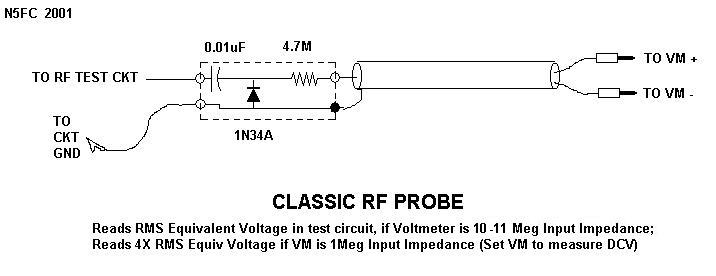Originally posted by catalin gramada
View Post
Ad Widget
Collapse
Announcement
Collapse
No announcement yet.
unbypassed cathode and frequency response
Collapse
X
-
There is nothing to show, but if it helps, this is what I measured 5 min ago with a cheap Fluke meter, just for comparison the results in "RMS" average values are more close to reality than my scope did. Measured at 400cps and 10kcps.Originally posted by Helmholtz View PostIs there a reason why you don't show a schematic?
Last edited by catalin gramada; 01-27-2019, 10:55 PM."If it measures good and sounds bad, it is bad. If it measures bad and sounds good, you are measuring the wrong things."
Comment
-
Well, originally you had -5.5dB loss ; but now, measuring with a Multimeter which is not really an Audio measuring instrument but more of an Electrician´s tool (meaning it won´t exactly shine measuring 10kHz, if at all), you have only 1.1dB loss?
Considering this is being measured by an inadequate instrument (which might justify the 1.1dB loss displayed) , it maks me think there was some error in the first determination.
But please repeat it using the test instruments you have today , you might have a surprise.Juan Manuel Fahey
Comment
-
Ok.
I suggest you build an RF Probe.
The 40´s to 60´s way to have a DC meter measure *FLAT* up to several Mega Hertz , and work perfectly well with modern meters, including dollar store $10 ones , since all measure DC very well and this turns AC , any frequency, into DC.
, and work perfectly well with modern meters, including dollar store $10 ones , since all measure DC very well and this turns AC , any frequency, into DC.


A couple points:
* original one uses a germanium diode to measure feeble values, maybe down to 10mV or so; you can use a silicon diode, preferably a "signal" type such as 1N4148 or 1N914 but here we don´t need exact value, just a comparison, and this by itself will measure same at 400Hz than at 10kHz (or 100kHz for that matter).
So we only compare "whatever it puts out" at 400Hz to whatever it puts out at 10 kHz and we are done.
* using silicon will make it somewhat deaf at low levels, since silicon has a threshold of almost half a volt , no big deal if we are measuring some 4 or 5V RMS so about 7V peak.
* since we are Audio guys, I would increase input capacitor to .047 or .1uF
No , we are not grossly loading the tube plate with it, diode will charge it to signal peak value in a few milliseconds and then will stop pulling current from source, so it will be effectively an open circuit
Or to be more precise, tube plate will "see the "separation" resistor shown in the schematic.
Again, old timers used 4M7 to "convert peak reading to RMS" into their 10M input impedance VTVM´s ; we can use 1M because our meters are not *that* high input impedance but in any case we are getting a comparison voltage.
If 400Hz and 10kHz both show, say, 5V DC (which would be somewhere between Peak and RMS), so be it, we are satisfied that it shows flatness (or lack of it).
* RF probes are built straight at the probe itself, to minimize capacitive load; once we got AC turned into DC cable can be any length; only precaution is to use shielded cable (even guitar quality), since it *is* a high impedance DC signal, and prone to getting inwanted outside interference.
This is a good way to make them, some build it inside a plastic BIC pen body or similar:


I bet you have everything needed (if you are flexible with diode choice, that is) and have it working in less than an hour Juan Manuel Fahey
Juan Manuel Fahey
Comment
Comment